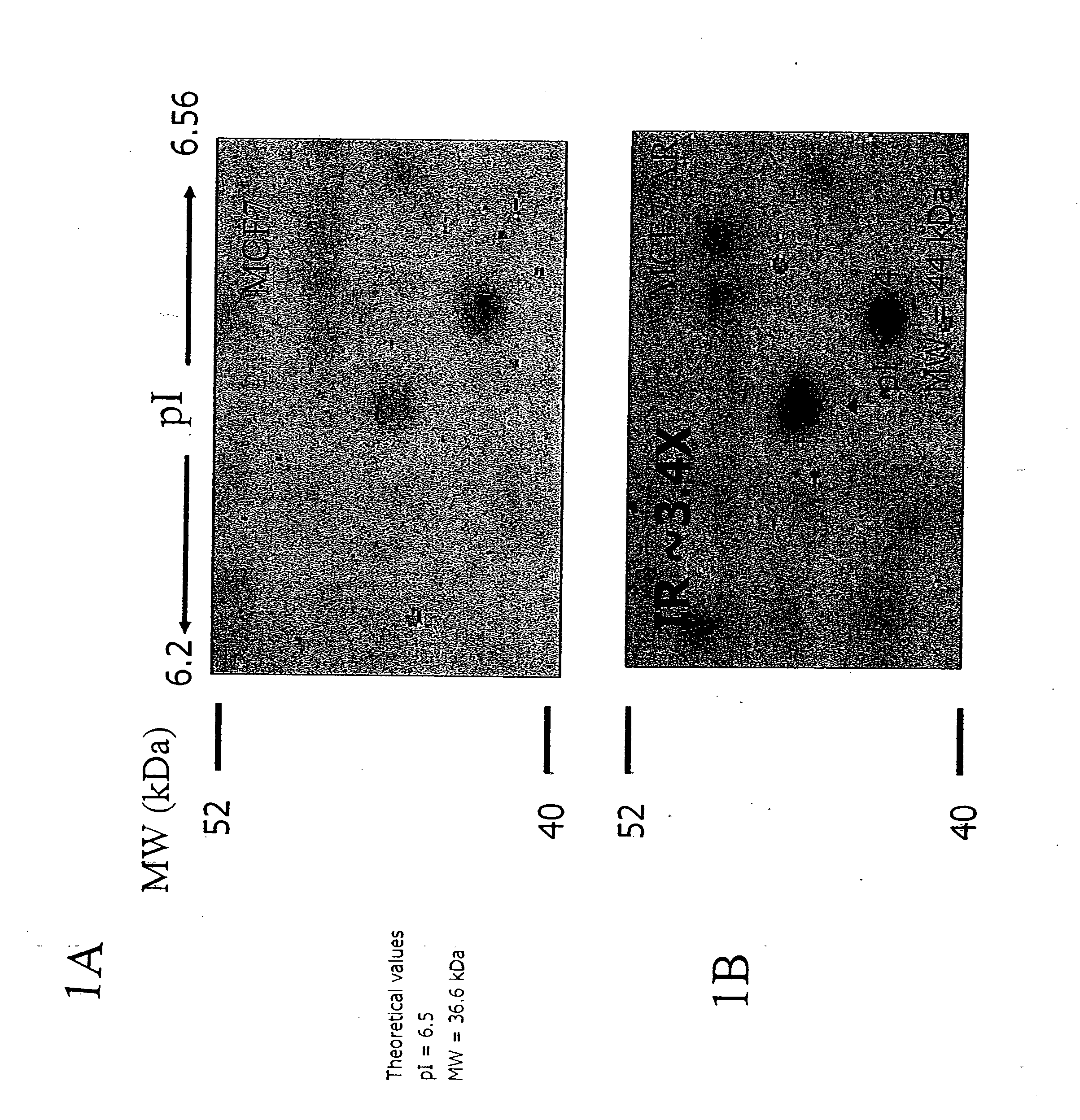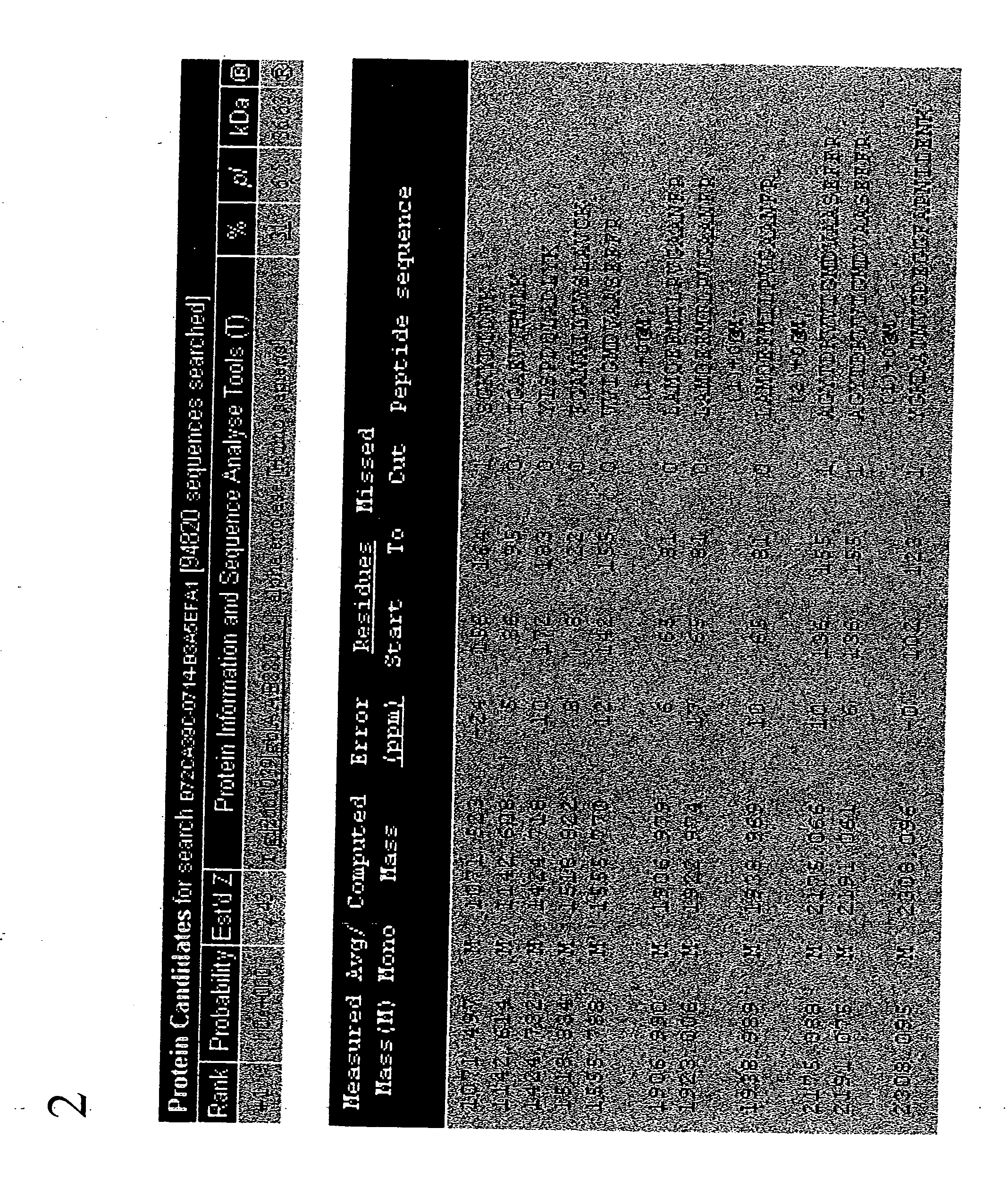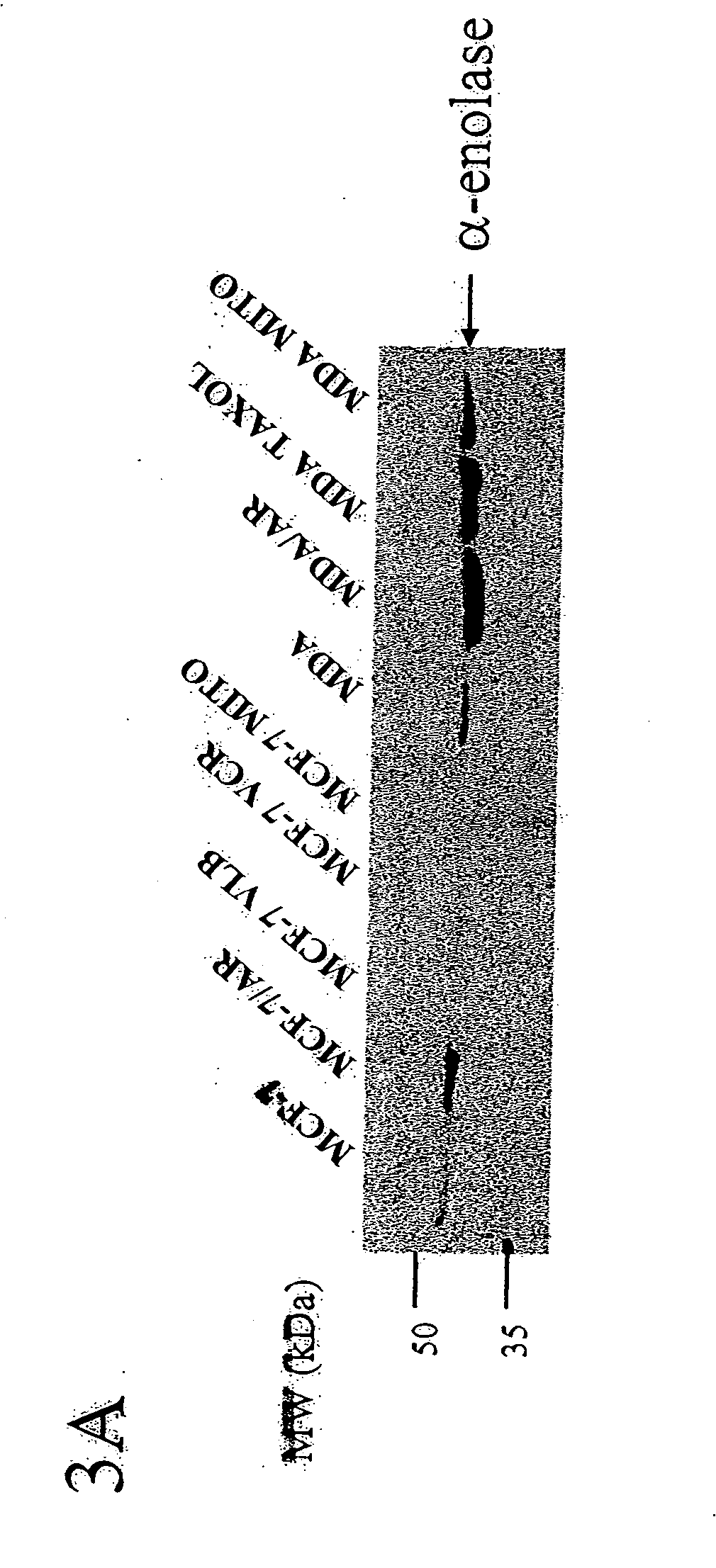Alpha enolase-directed diagnostics and therapeutics for cancer and chemotherapeutic drug resistance
a technology of alpha enolase and cancer, applied in the field of cancer, can solve the problems of increasing the risk of cancer to the patient's life and wellbeing, and the treatment options are significantly limited, and achieve the effect of increasing the sensitivity of neoplastic cells
- Summary
- Abstract
- Description
- Claims
- Application Information
AI Technical Summary
Benefits of technology
Problems solved by technology
Method used
Image
Examples
example 1
[0274] Overexpression of a 44 kD Protein in Cancer Cell Lines
[0275] Studies were performed to determine what proteins, if any, were differentially expressed in chemotherapeutic drug-resistant tumor cell lines as compared to their drug-sensitive counterparts. Drug-sensitive cell lines were obtained from were obtained from ATCC (Manassas, Va., USA). MCF7 / AR, human lung carcinoma small cell H69, H69 / AR, and HL60 / AR cells were obtained from McGill University, Montreal, Qc, Canada. MDA-MB-231 / AR, MOLT4 / AR 250 nM and MOLT4 / AR 500 nM cells were derived at Aurelium BioPharma Inc. (Montreal, QC, Canada). Chemotherapeutic drug-resistant cell lines were derived from a drug-sensitive clone of the “parent” cancer cell line representing a particular tissue.
[0276] The different cell lines used in the Examples below are listed in Table 1.
TABLE 1Drug-Sensitive Cell LinesDrug-Resistant Cell LinesMCF-7MCF-7 / ARMDAMDA-MB231H69H69 / ARH460H460 / ARK562K562 / ARHSB-2HSB-2 / ARRPMI-8226RPMI-8226 / ARMOLT4MOLT4 / A...
example 2
Identification of a 44 kD Protein in MCF-7 / AR Breast Cancer Cells as α-Enolase
[0282] To discover the identity of the 44 kD protein that was overexpressed in drug-resistant cell lines, the spot located on the 2D gel was subjected to mass spectrometry. FIGS. 1A and 1B show a 44 kD spot to be up-regulated by 3.4 times in the drug-resistant cell samples. The 44 kD spot was isolated and subjected to tryptic digestion in preparation for mass spectrometry. The spot of interest was excised with a clean (clean; acid washed) razor blade and cut into small pieces on a clean glass plate and transfer into a 200 μl PCR tube (MeOH treated). The gel pieces were mixed with 50 μl destainer A and 50 μl destainer B (provided with SilverQuest kit, Life Technologies) (or 100 μl of the destainers premix prepared fresh) and incubated for 15 min. at room temperature (RT) without agitation. The destaining solution was removed using a capillary tip. Water was added to the gel pieces, mix and incubate 10 min ...
example 3
Identification of α-Enolase Overexpression in MOLT4 / AR Cell Lines
[0284] Western blot analysis utilizing anti-α-enolase antibodies was performed on MOLT4 cell extracts fractionated on SDS-PAGE (FIG. 3). Cells extract were prepared according to the protocol detailed in Example 1. Total cell lysates were thawed, then 100 mg of protein (completed to 50 ml with lysis buffer) were mixed with 10 ml of 5× electrophoresis buffer (60 mM Tris-HCl, pH 6.8, 25% glycerol, 2% SDS, 14.4 mM β-mercaptoethanol, 0.1% bromophenol blue) and these samples were heated at 100° C. for 5 min. and loaded on 10% SDS-PAGE gels. Resolved proteins were electrophoretically transferred onto nitrocellulose membranes (Hybond, Amercham Pharmacia Biotech) for 1 hour. FIG. 3D shows the overexpression of α-enolase in Molt-4 cells selected with adriamycin.
[0285] After blocking the membranes with 5% non-fat milk in 1×PBS overnight at 4° C., all antibody-binding reactions were performed in 5% non-fat milk in 1×PBS for 2 ho...
PUM
| Property | Measurement | Unit |
|---|---|---|
| Fraction | aaaaa | aaaaa |
| Electrical resistance | aaaaa | aaaaa |
| Cell angle | aaaaa | aaaaa |
Abstract
Description
Claims
Application Information
 Login to View More
Login to View More - R&D
- Intellectual Property
- Life Sciences
- Materials
- Tech Scout
- Unparalleled Data Quality
- Higher Quality Content
- 60% Fewer Hallucinations
Browse by: Latest US Patents, China's latest patents, Technical Efficacy Thesaurus, Application Domain, Technology Topic, Popular Technical Reports.
© 2025 PatSnap. All rights reserved.Legal|Privacy policy|Modern Slavery Act Transparency Statement|Sitemap|About US| Contact US: help@patsnap.com



